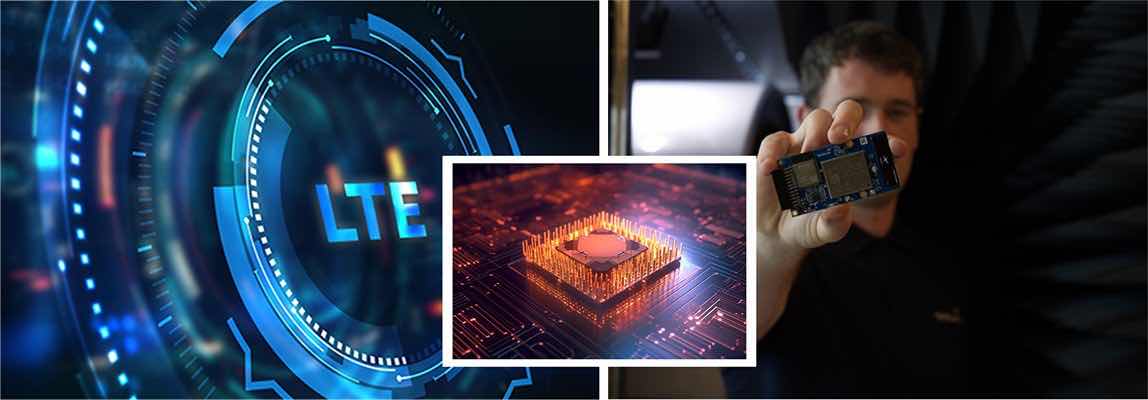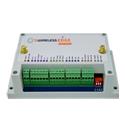
Navigating the Complexities of LTE IoT Standards for Your Deployment.
Crafting an IoT device for widespread implementation brings forth a myriad of challenges, chief among them being the selection of the optimal LTE IoT standard. This decision is foundational, as the connectivity framework will profoundly shape your device’s functionality and compatibility with various hardware components and cellular carriers upon release.
As the sun sets on the era of 2G and 3G networks, the spotlight shines on 4G LTE standards: LTE Cat 1, LTE Cat 1bis, LTE-M, and NB-IoT. With such a range of options, it is essential to understand the differences and choose the best option based on your use case and the specific data communication requirements of your device. Join us as we delve into each cellular IoT LTE standard to unravel the intricacies and facilitate informed decision-making.
What is LTE?
LTE is an abbreviation for “long-term evolution”, which is a wireless broadband standard that belongs to the fourth generation (4G) and replaces 3G. Even though it is considered a part of 4G, it is slower than true 4G and much slower than the more recent 5G standard. LTE was launched in 2008 with Release 8 by 3GPP, and its main advantage over 3G was enabling fast internet connectivity on mobile devices. While newer and faster 5G standards have since replaced LTE, it still plays an important role in connecting IoT devices.
LTE Cat 1
LTE Cat 1 was first introduced as a part of Release 8 in 2008, with a maximum throughput of 10 Mbps for download and 5 Mbps for upload. At the time, it was designed for devices with limited computational abilities. However, it gained traction when manufacturers started focusing on producing small IoT devices such as connected watches or precision agriculture monitors. These devices had limited space for advanced LTE features, and the LTE Cat 1 standard seemed like a perfect fit.
However, there was a complication as Release 8 did not specify whether a single antenna design was permissible, which created uncertainty around using the standard for small IoT devices. Designers debated whether they could build LTE Cat 1 devices with only one antenna without straying from the specifications of Release 8.
In 2017, Release 13 solved this problem by defining a new standard called LTE Cat 1bis, which allows for single-antenna IoT device designs, thus clarifying the use of the standard for small IoT devices.
LTE Cat 1bis
Cat 1bis is a modified version of LTE Cat 1 that meets IoT developers’ requirements for single-antenna IoT hardware. This update allows for simpler and lower-cost chipset designs that still provide the same throughput specifications as the original LTE Cat 1 (10 Mbps down, 5 Mbps up, and latency of less than 100 ms).
LTE Cat 1bis is a great choice for use cases that require global connectivity, as it works seamlessly on existing LTE networks without requiring upgrades to the base stations (cell towers). Additionally, it supports features such as voice capabilities and video streaming, similar to LTE Cat 1.
Overall, the update to LTE Cat 1bis enables IoT developers to create cost-effective and simplified IoT devices with global connectivity and without compromising on performance.
LTE-M
LTE-M is a communication technology designed for IoT applications. It is known as low-cost machine-type communication (MTC) in Release 12, LTE-enhanced MTC (eMTC) in Release 13, and part of Release 16. It continues to adapt alongside the 5G specifications.
With the introduction of Release 14, LTE-M now allows data transfer speeds of up to 4 Mbps over considerable distances. It is a practical alternative to unlicensed LPWAN technologies like Sigfox and LoRa. Additionally, it allows devices to use power-saving strategies such as Power Saving Mode (PSM) and Extended Discontinuous Reception (eDRX).
Moreover, LTE-M offers handoff between cellular towers, enabling mobile IoT devices such as wearable health monitors, cargo condition monitors, and asset trackers to remain connected even while on the move. Similar to LTE Cat 1bis, it also includes support for voice features and low latency (under 15 ms).
NB-IoT
NB-IoT is a low-power, wide area network technology that was designed as part of 3GPP’s Release 13 in 2015. Its main purpose is to cater to IoT applications, with low data rates and periodic check-ins.
With NB-IoT, IoT devices can save power, and the technology offers the same power-saving features as LTE-M, with different cycle durations and other parameters. The original NB-IoT in Release 13 has a bandwidth limit of a single 200kHz narrowband, with uplink speeds of 62 kbps and download speeds of 26 kbps. The latency for this version is between 1.6 and 10 seconds.
Release 14 of 3GPP introduced LTE Cat NB2, which is an updated version of NB-IoT. This newer standard provides maximum uplink speeds of 159 kbps and downlink speeds of 127 kbps, which is a significant increase over the older version.
NB-IoT can achieve good long-range communication and signal penetration, which makes it ideal for use cases such as parking control sensors, smart building systems, and industrial IoT applications. However, it is important to note that NB-IoT does not allow for tower handoff, so its uses are limited to sensors that will stay in the same place once deployed.
For any questions regarding the discussed content, please don’t hesitate to reach out to the team via email at sales@txwireless.com. Please visit our capabilities page to learn more about how TxWireless can help you with your connected device requirements.
Author:
Frank Lennon – Product Manager




























